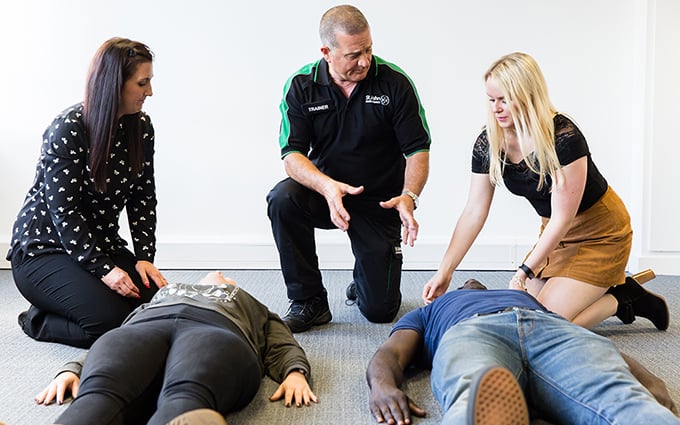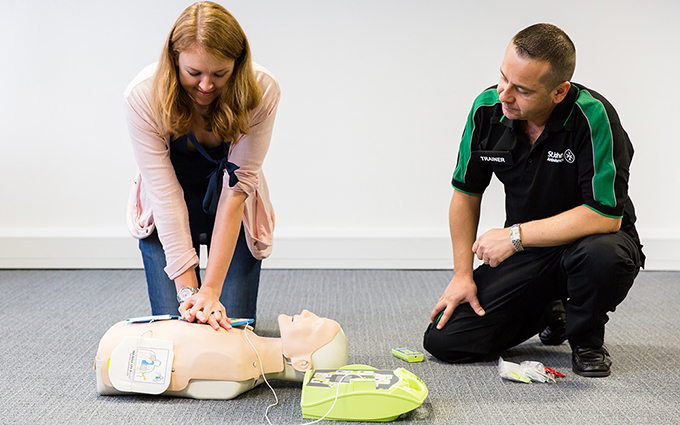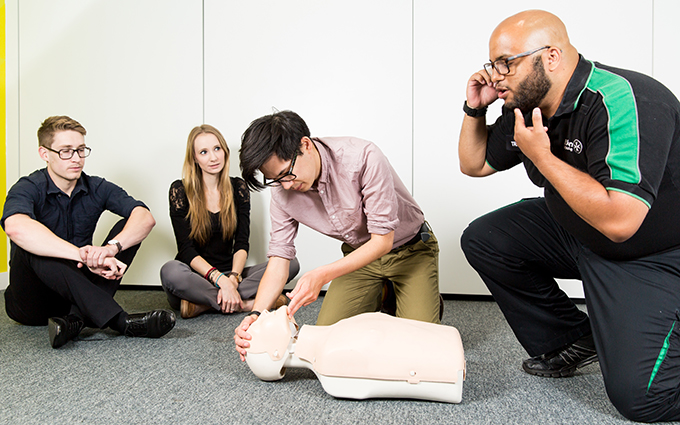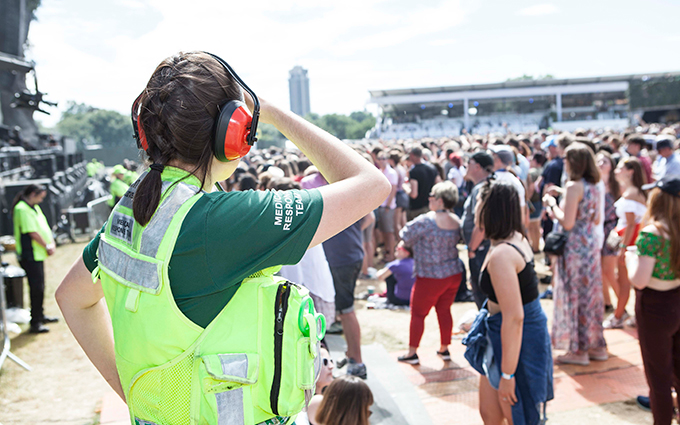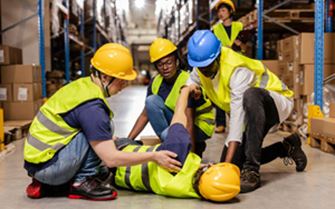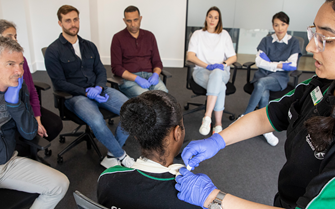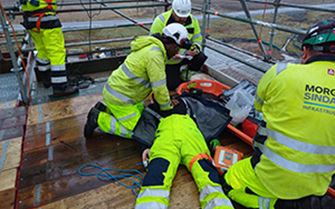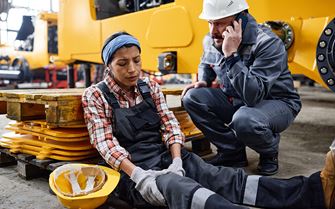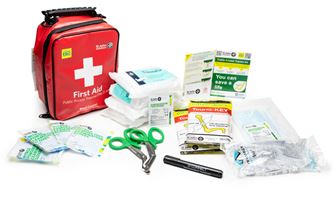Published: 23rd June 2025.
Last updated: 23rd June 2025.
Author: Lisa Sharman.
Contents
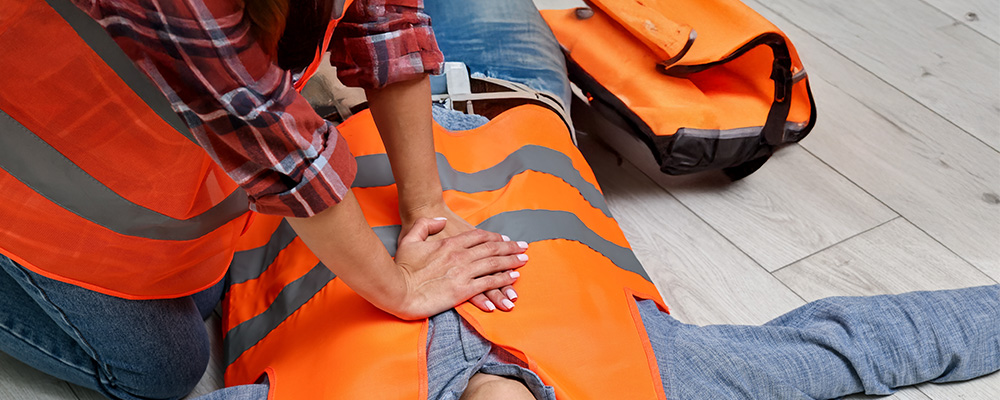
Why do people freeze in emergencies? Lisa Sharman, National Head of Education and Commercial Training, St John Ambulance, explores the Bystander Effect – and how workplace training can break the cycle.
You want to help but doubt sets in. The rest of your colleagues are also waiting for someone else to intervene.
If no one does, this is called the Bystander Effect, a psychological phenomenon in which people are less likely to help in an emergency due to the presence of others. This can have serious consequences for the people not getting the help they need.
When one person does take action, however, it can make a critical difference and inspire others to feel like they can act too. The good news is that becoming one of these ‘active bystanders’ simply requires stepping forward – and undertaking hands-on training can equip you with the skills and confidence you need to do so.
What causes the Bystander Effect?
The concept of the Bystander Effect was first popularised by social psychologists in 1960s America after dozens of onlookers were said to have failed to help a woman who was attacked outside her New York apartment.
According to research on the subject, before choosing to help, a bystander progresses through five decisions:
- Noticing something is wrong
- Defining the situation as an emergency
- Deciding they are personally responsible to act
- Choosing how to help
- Acting on their decision to help.
There are many reasons why people facing these decisions might end up standing by. These can range from convincing themselves someone else will step in, to a fear of not being able to help or not knowing what to do, and even concerns about potentially being held legally responsible if there is a negative outcome. Here, it’s worth noting that the UK has Good Samaritan laws to support those who act in good faith to help others.
Then there is the uncomfortable fact that emergencies can be dirty, unpleasant or traumatic – bystanders can feel squeamish around blood or injured limbs, for example. People can also be influenced by a fear of providing treatment and getting it wrong, and even potentially being held legally responsible if there is a negative outcome.
Training a vital factor
Taking a first aid training course builds the skills, knowledge and confidence needed to overcome such doubts and act in emergencies.
Statistics have long shown that people with advanced knowledge are more likely to step forward in the case of a life-threatening injury or illness. How recently someone was trained also affects how they act – the longer ago the training, the more likely they are to intervene only as a last resort.
Practical, hands-on courses and regular refreshers can make a life-saving difference. St John Ambulance’s comprehensive First Aid at Work course equips people with the ability and knowledge needed to deal with first aid emergencies in most workplaces.
Industries with a higher risk of workplace emergencies or trauma, such as agriculture and manufacturing, may benefit from more bespoke training. Our highly interactive First Responder On Scene (FROS) and First Response Emergency Care Level 3 (FREC3) courses are designed to prepare people to operate as emergency responders, with participants learning skills including how to manage a scene and deal with situations such as catastrophic bleeding and neck and spinal injuries.
How big a problem is standing by?
The Bystander Effect is an issue because fast action is vital in an emergency. When a defibrillator is used within the first three minutes it can increase the chances of someone surviving a cardiac arrest by up to 70%, for example.
Yet half of us say we would panic if we came across a health emergency due to a lack of training.
Gender disparities further complicate the situation with studies showing that women who collapse in public are less likely to receive life-saving cardiopulmonary resuscitation (CPR) from a bystander. St John Ambulance research has found that one in three people are afraid to give CPR in public to people with breasts because they are afraid of touching the patient’s chest.
On top of this, our research shows that many of us are likely to come across an emergency at some point. More than a quarter of people have experienced a cardiac arrest incident for example, either as a first aider, bystander or patient. Nearly three in 10, meanwhile, have experienced a severe bleed incident in some way.
Be the difference maker
Just being aware of the Bystander Effect can mean a person is more likely to step in and help. But first aid training can make a real difference in improving outcomes – giving people the confidence to act when it matters and bridging the crucial gap before emergency services arrive.
By providing training, workplaces are investing in the safety and wellbeing of their employees and ensuring, should an emergency happen, there is always a steady pair of hands on the scene.
What’s more, the benefits of being trained go far beyond the classroom or workplace. An incident could happen on the morning commute, during a lunch meeting, or at a weekend community event.
In all of these cases, fast action is essential – and that won’t happen unless someone steps forward. Don’t be a bystander – be the reason someone gets another chance.


